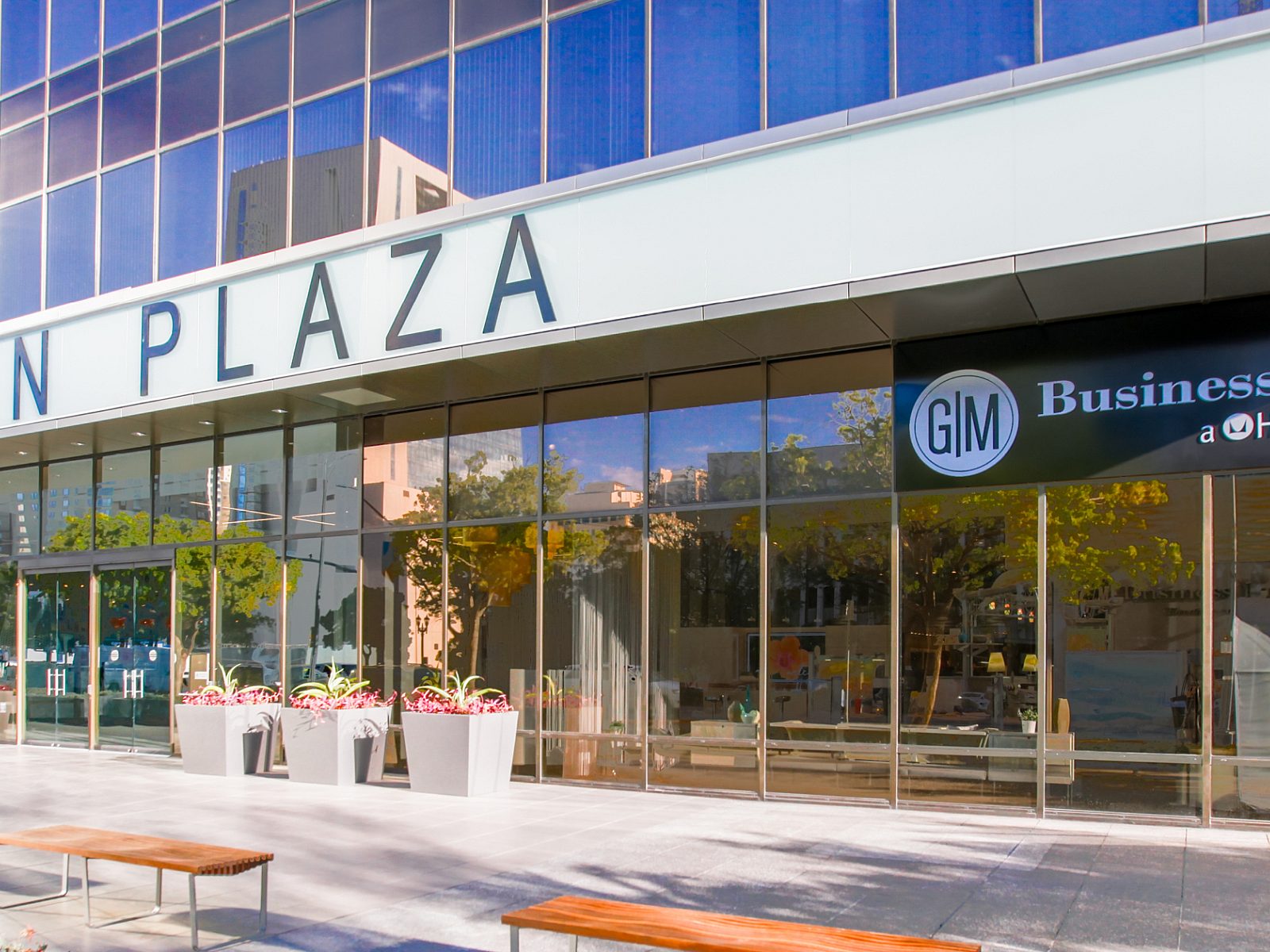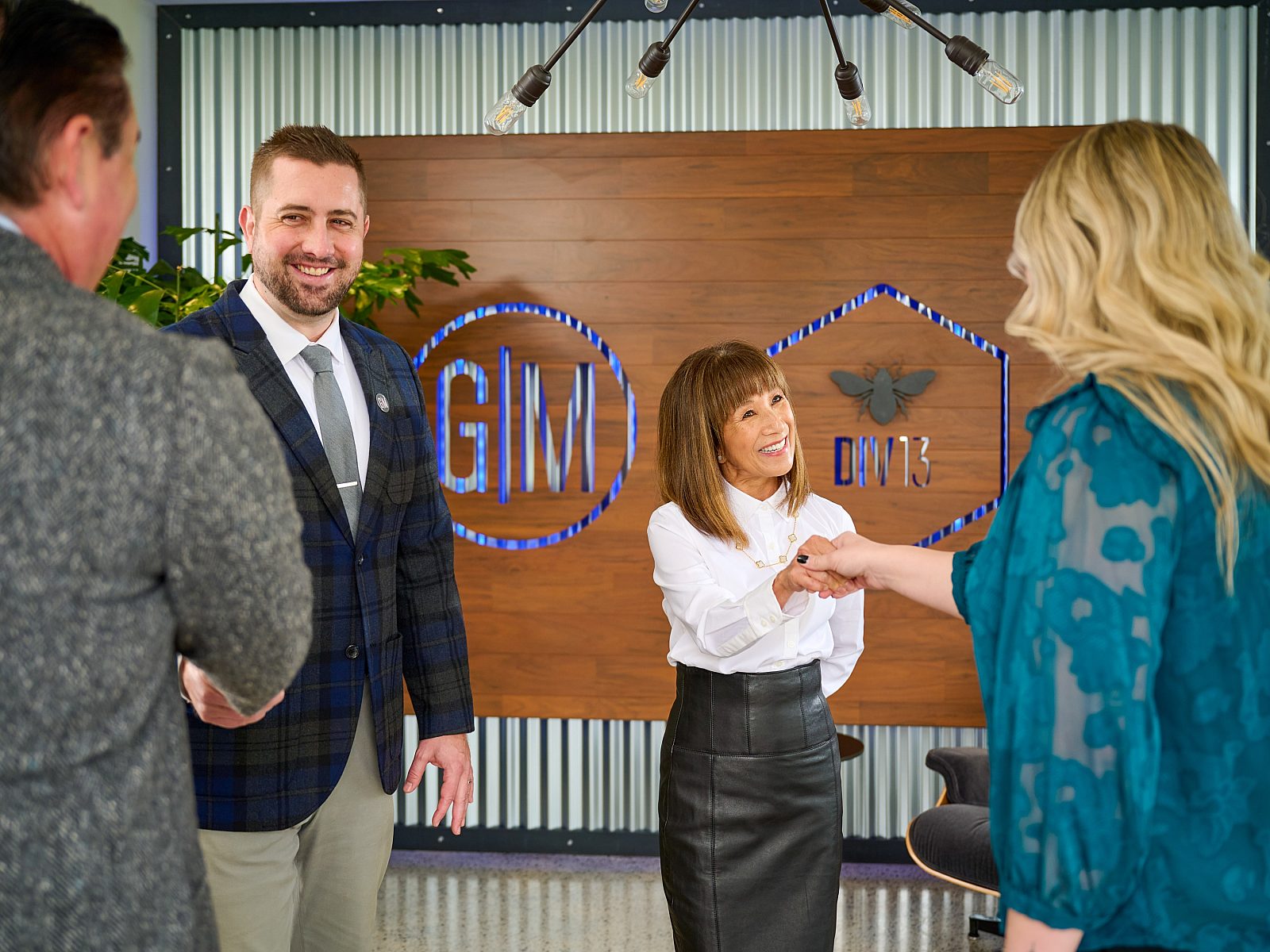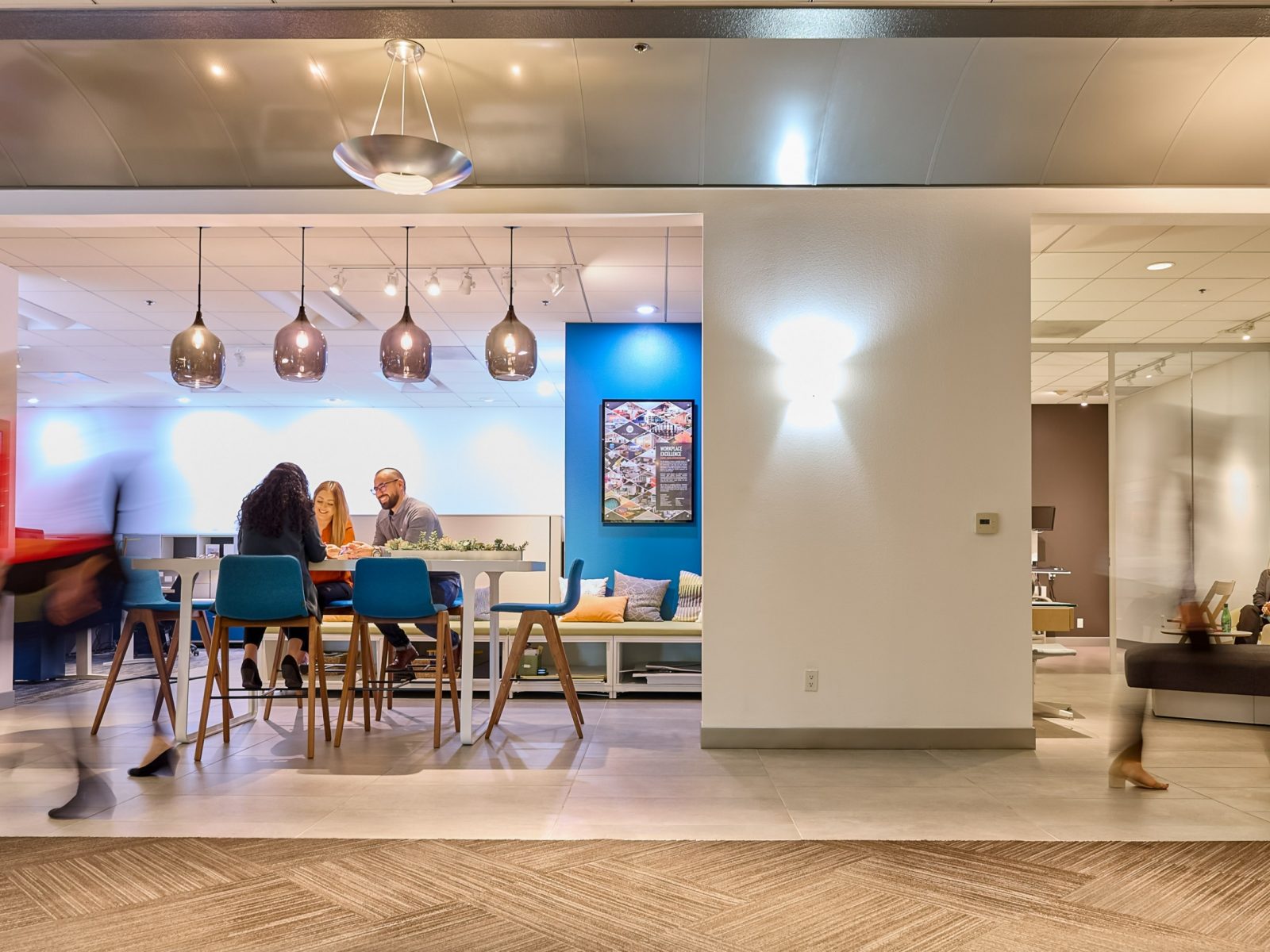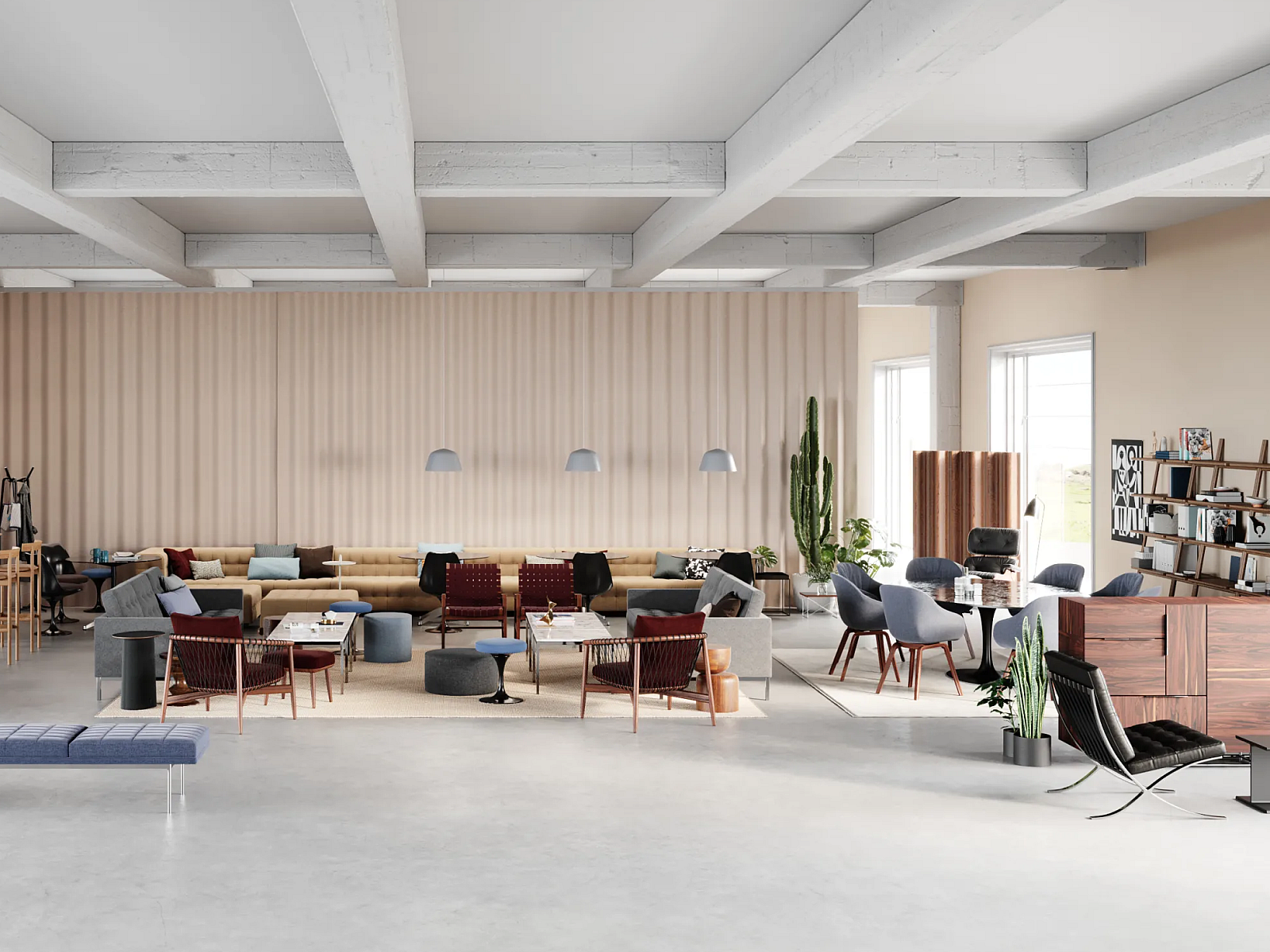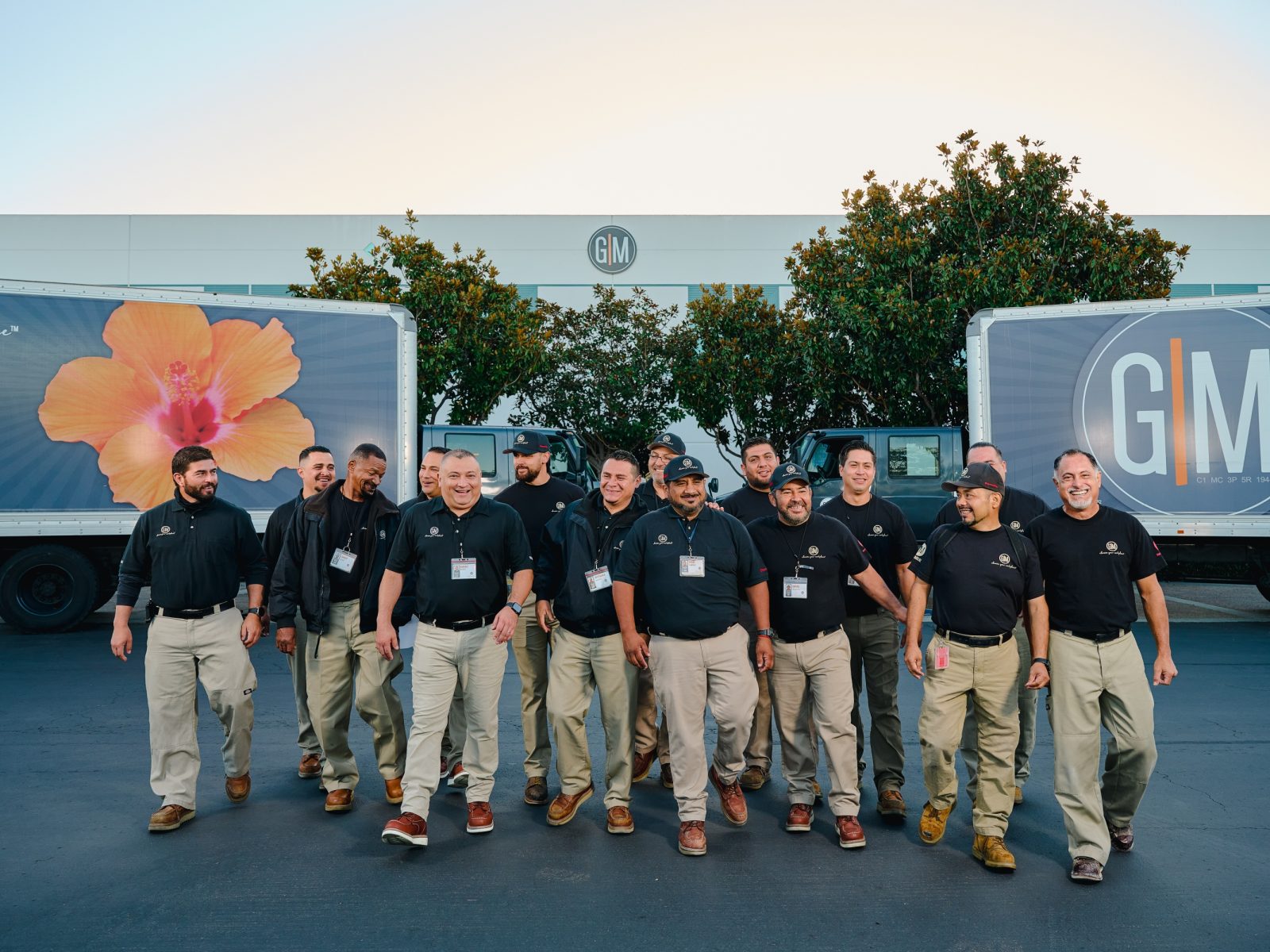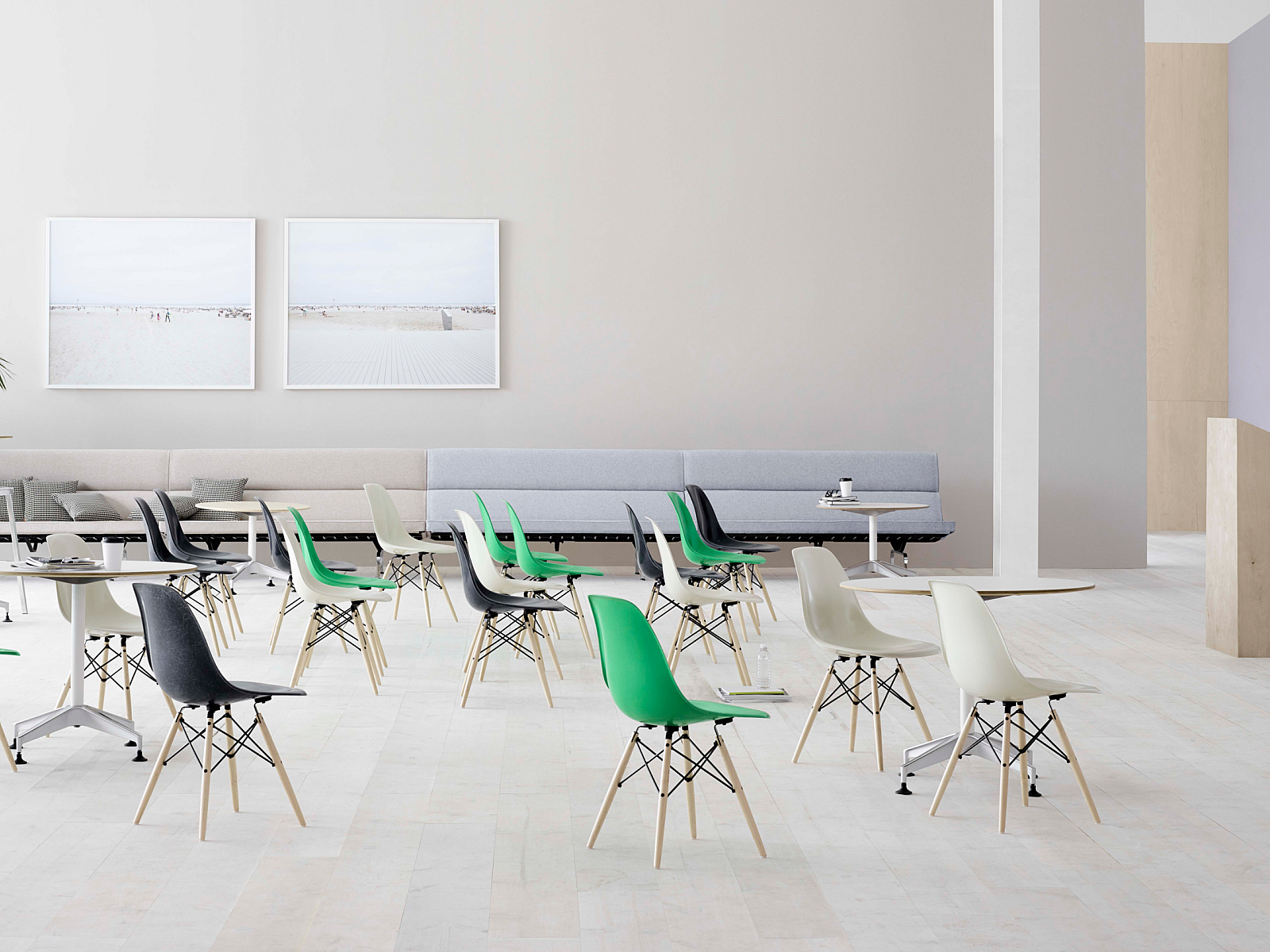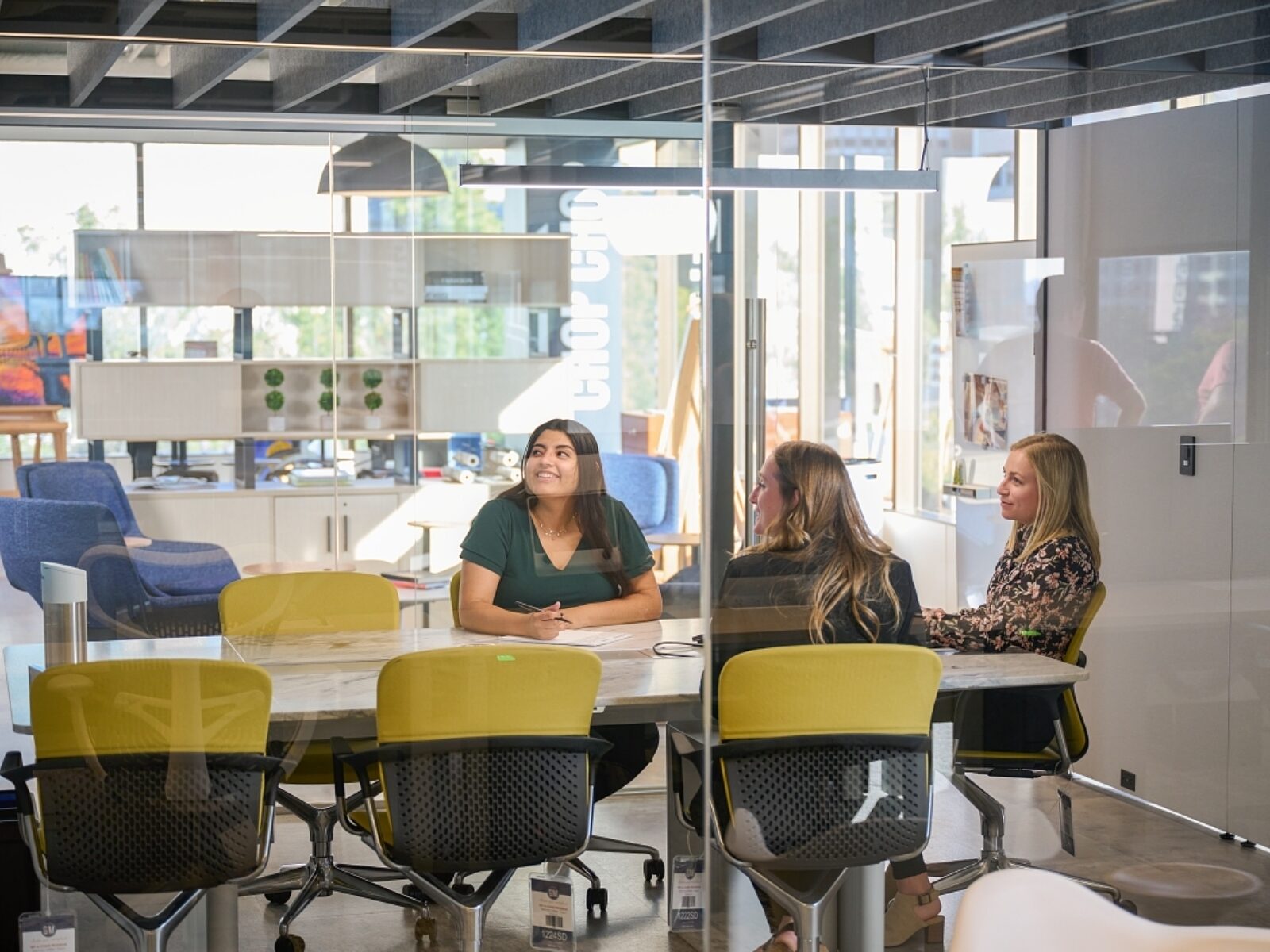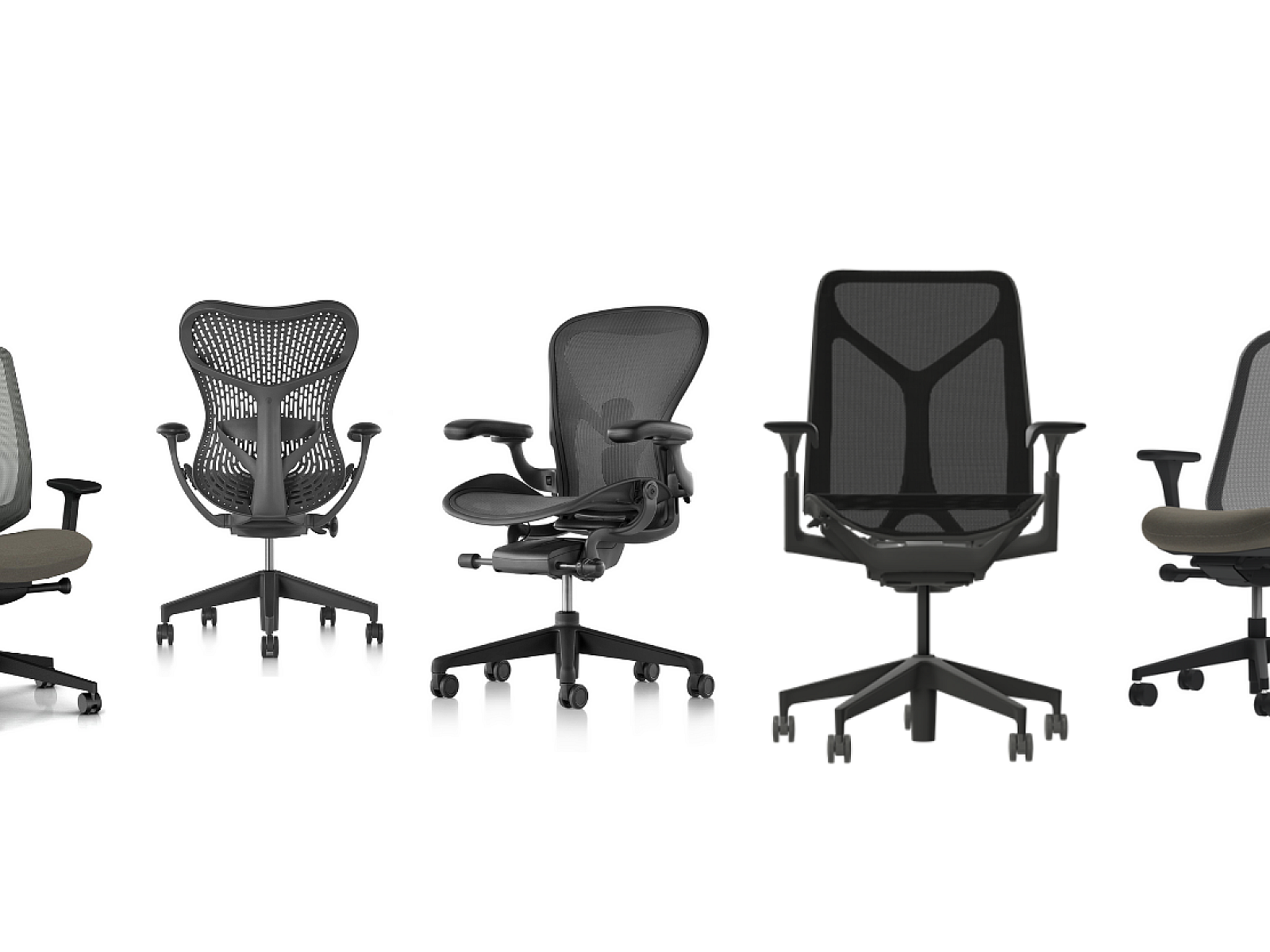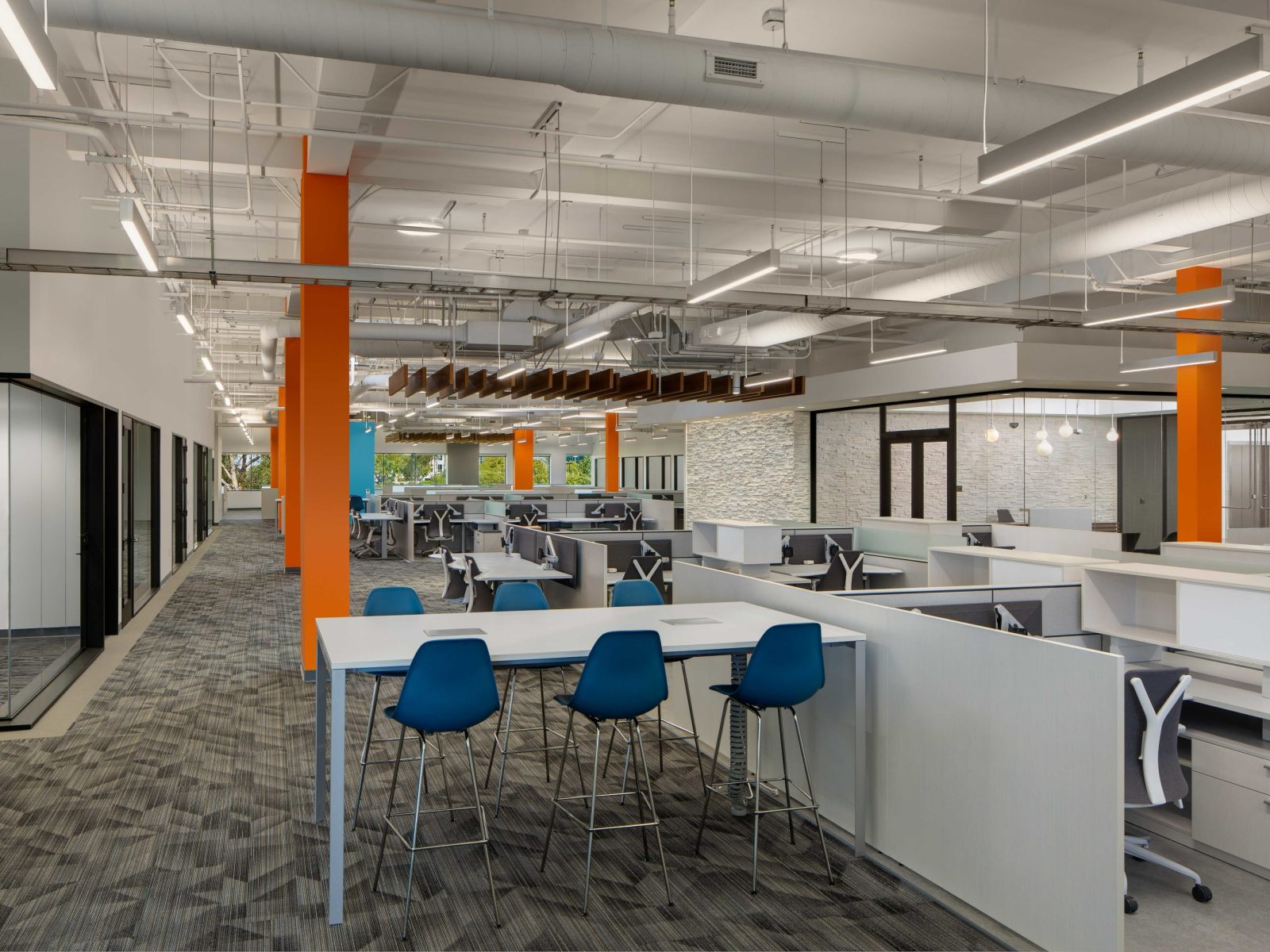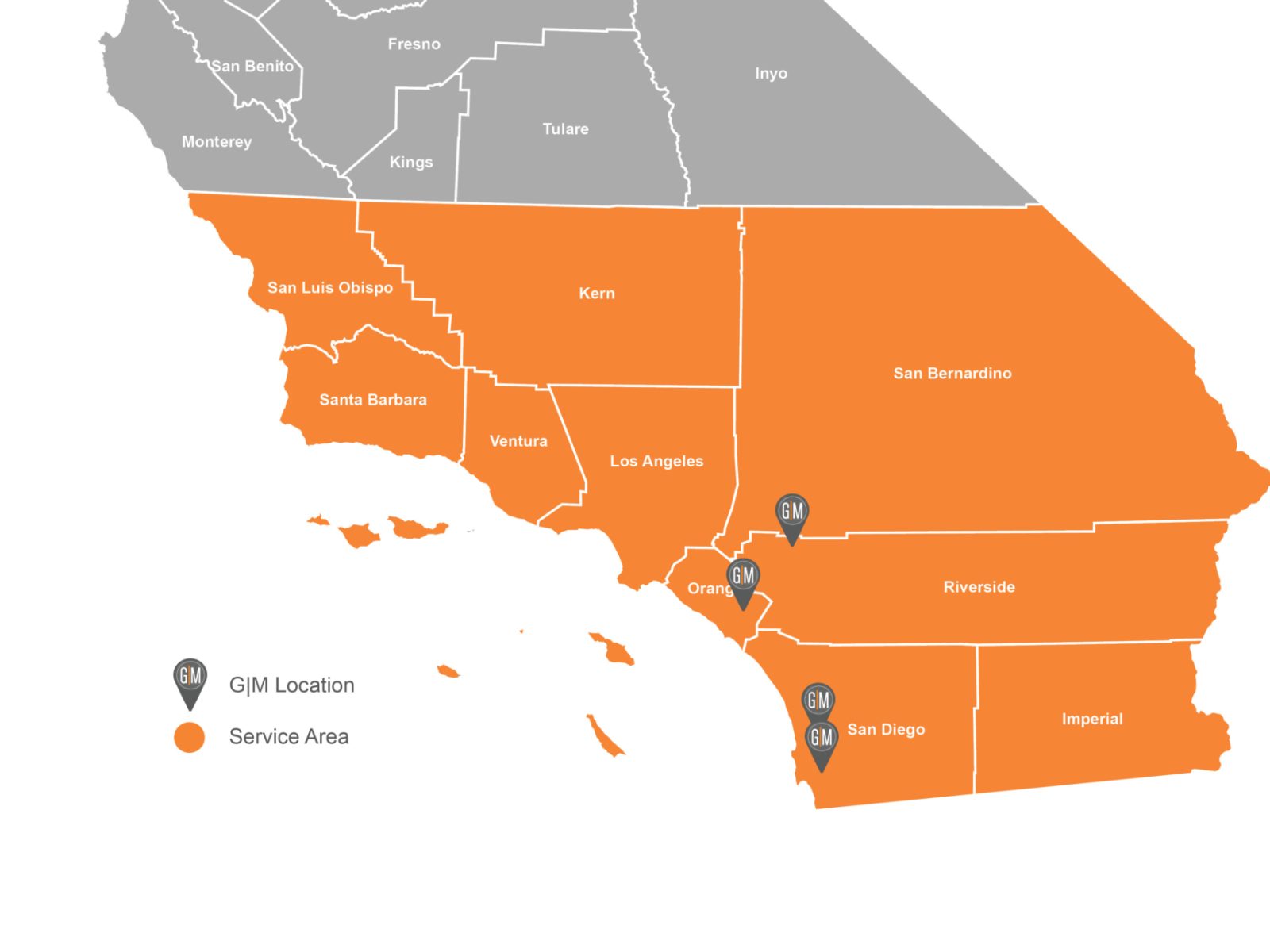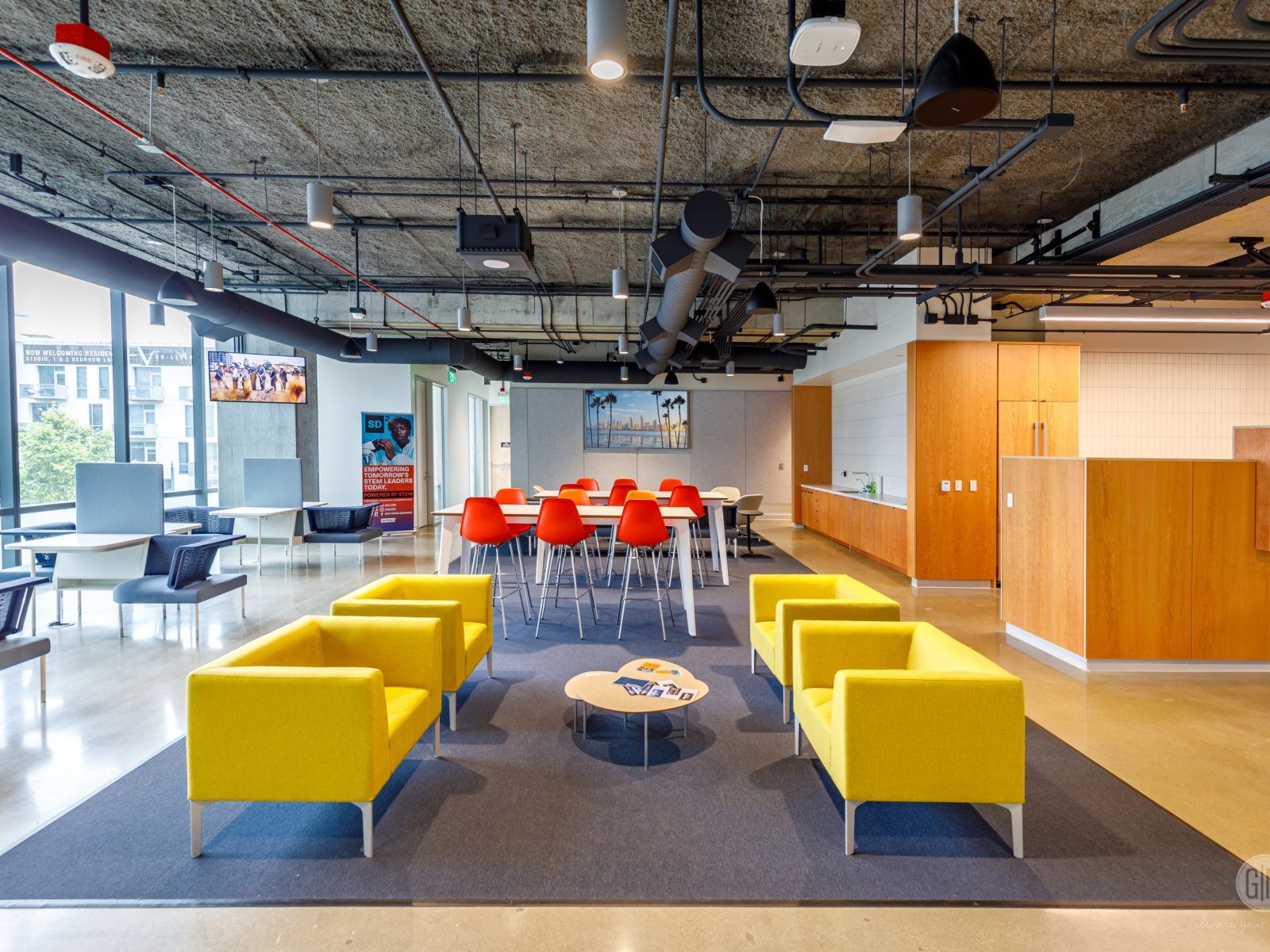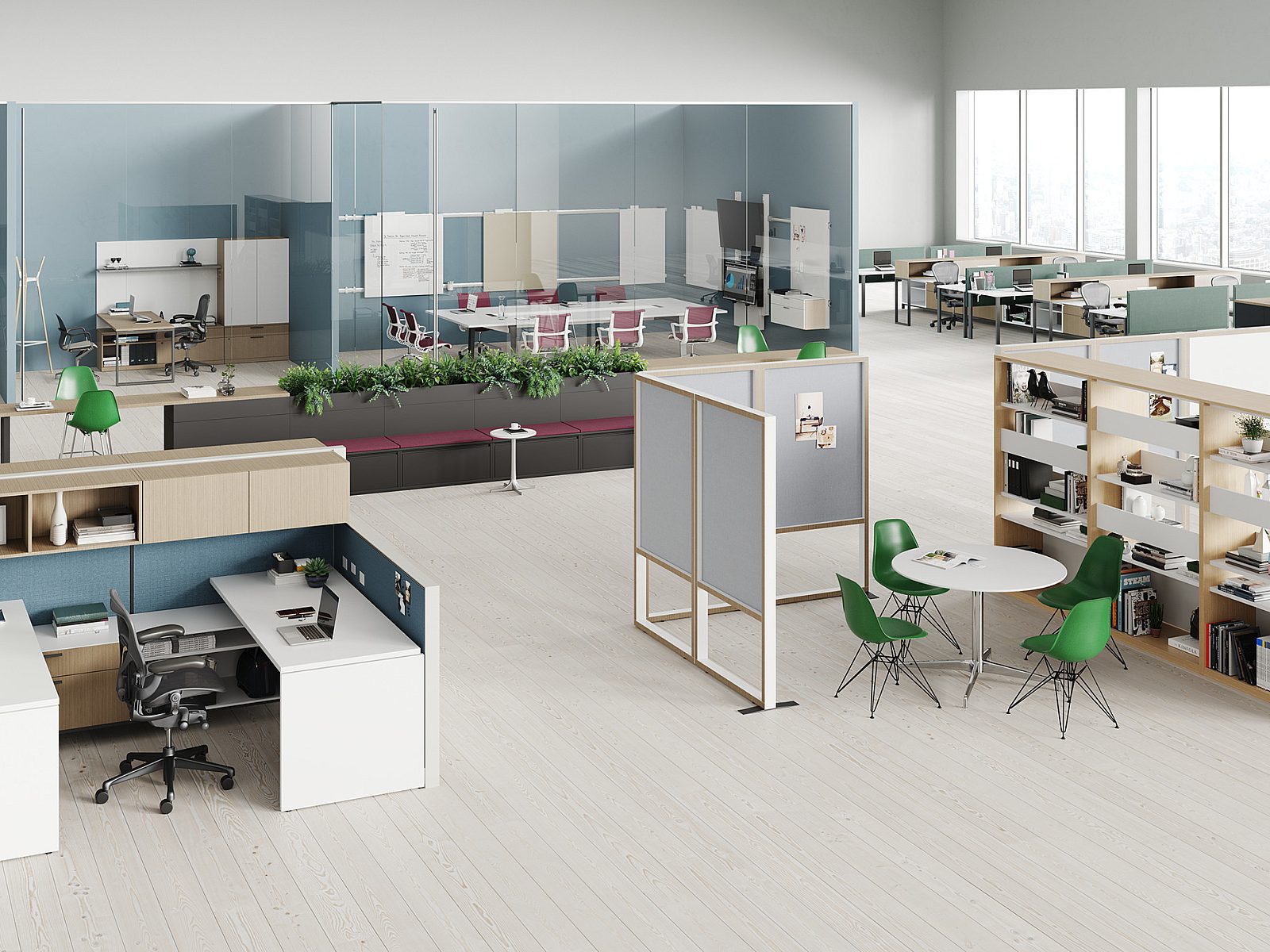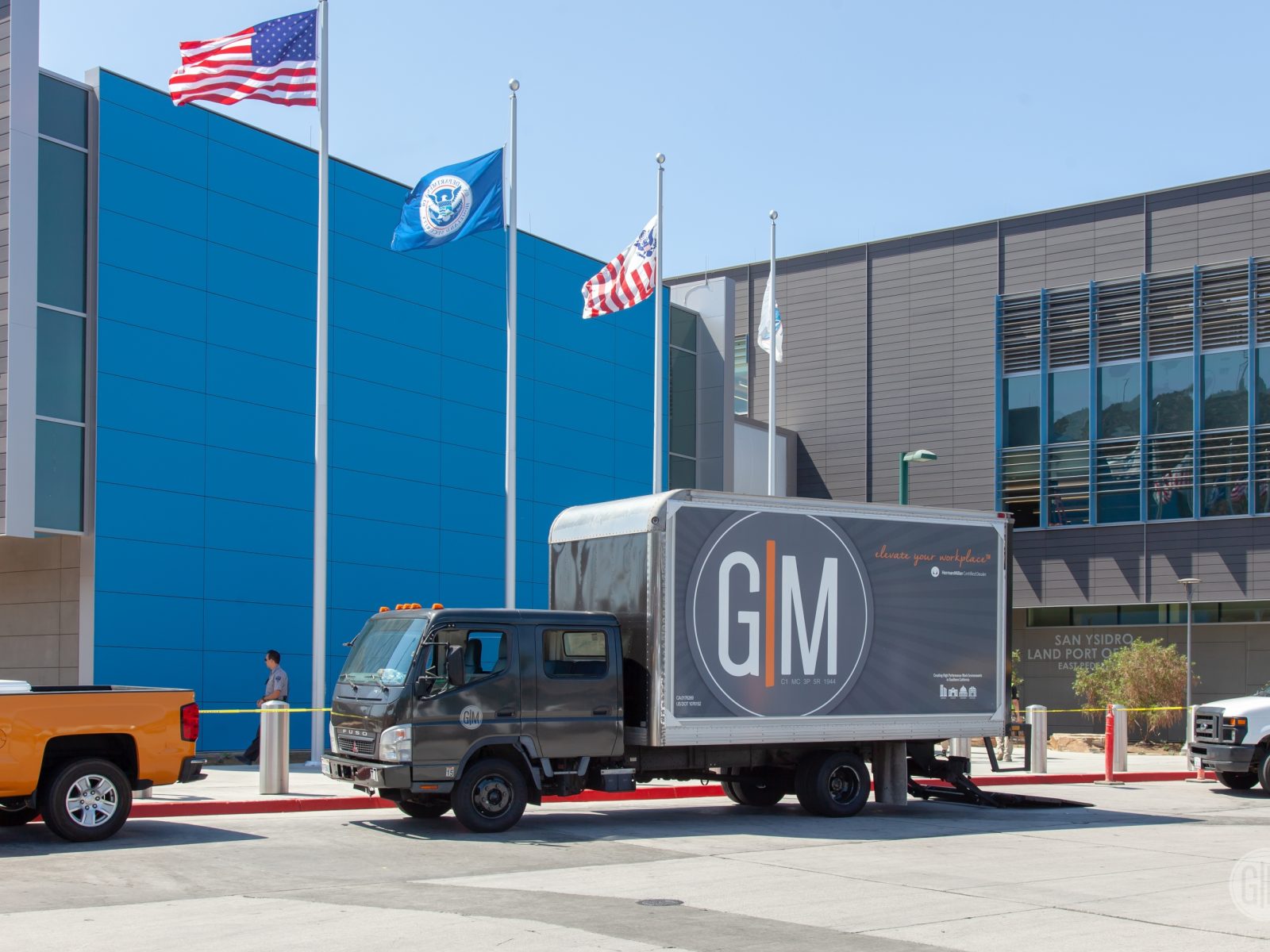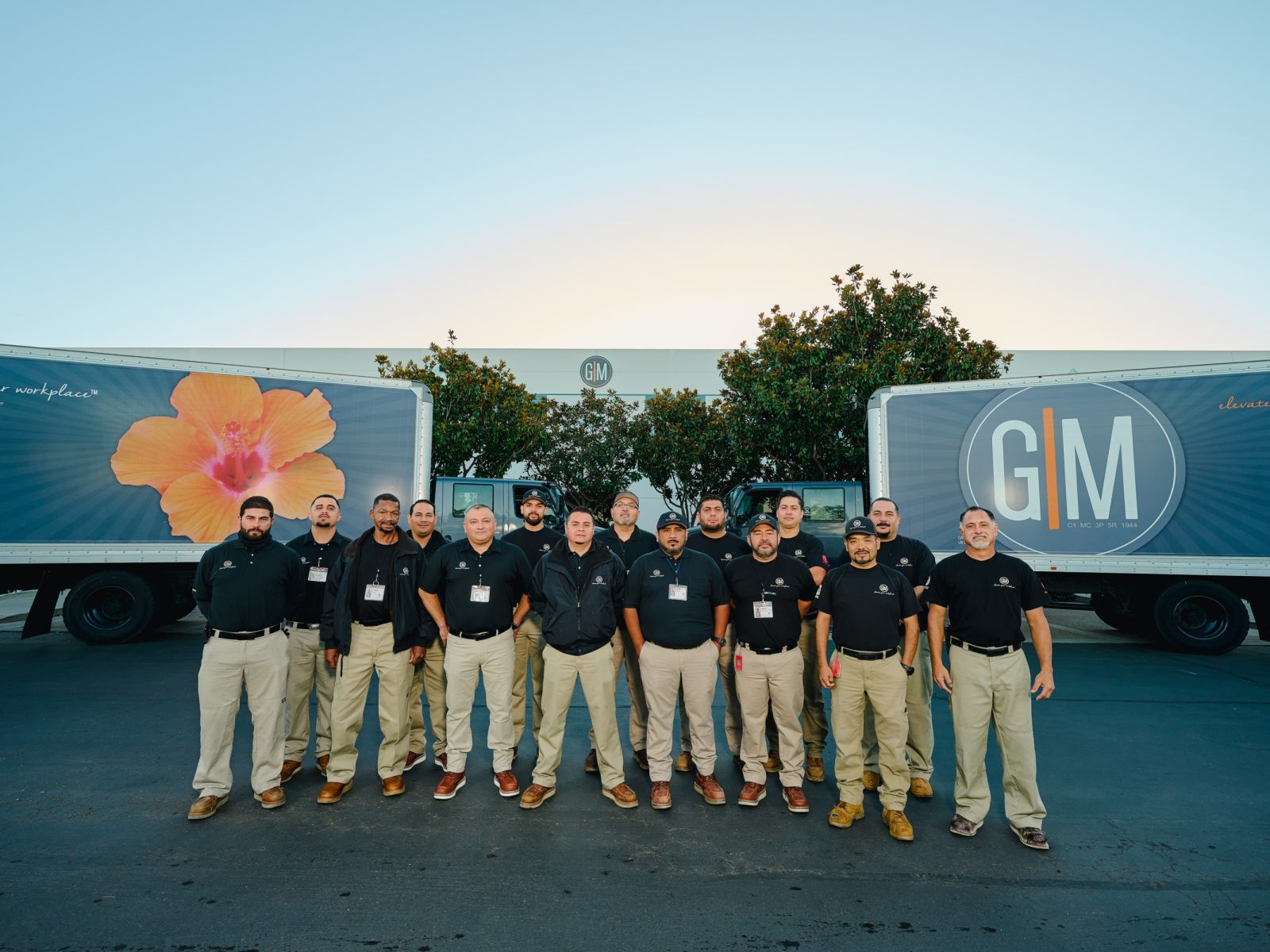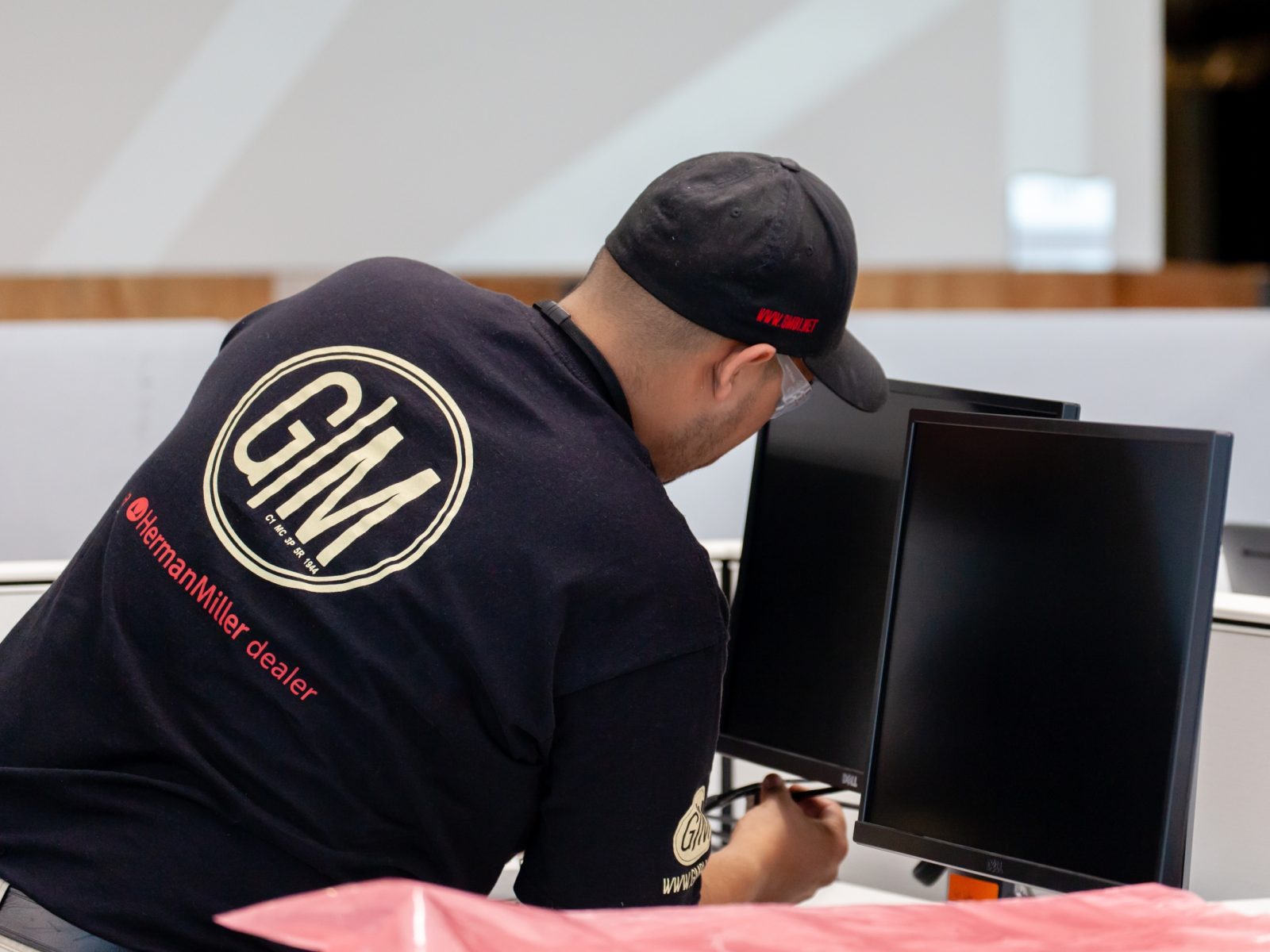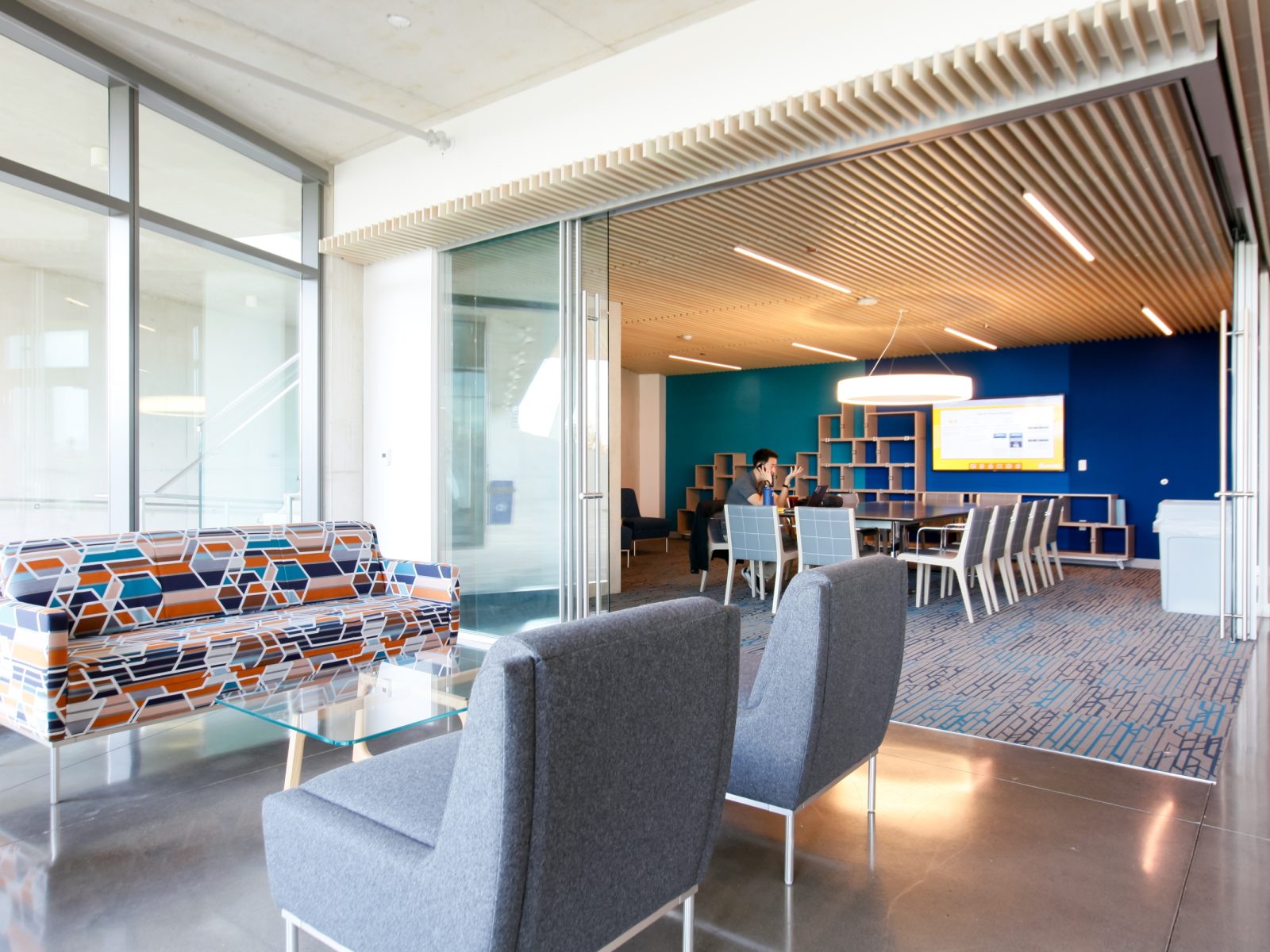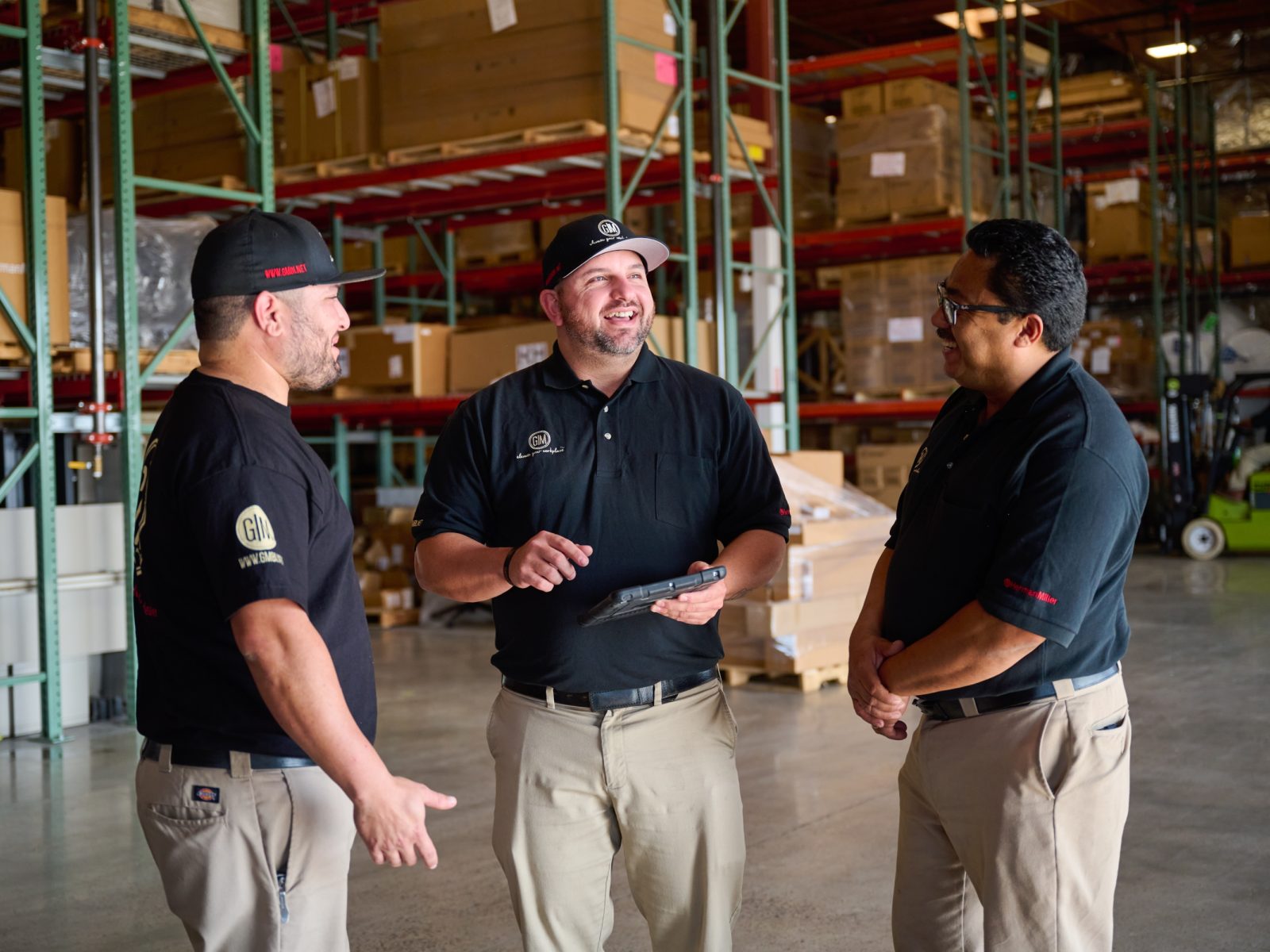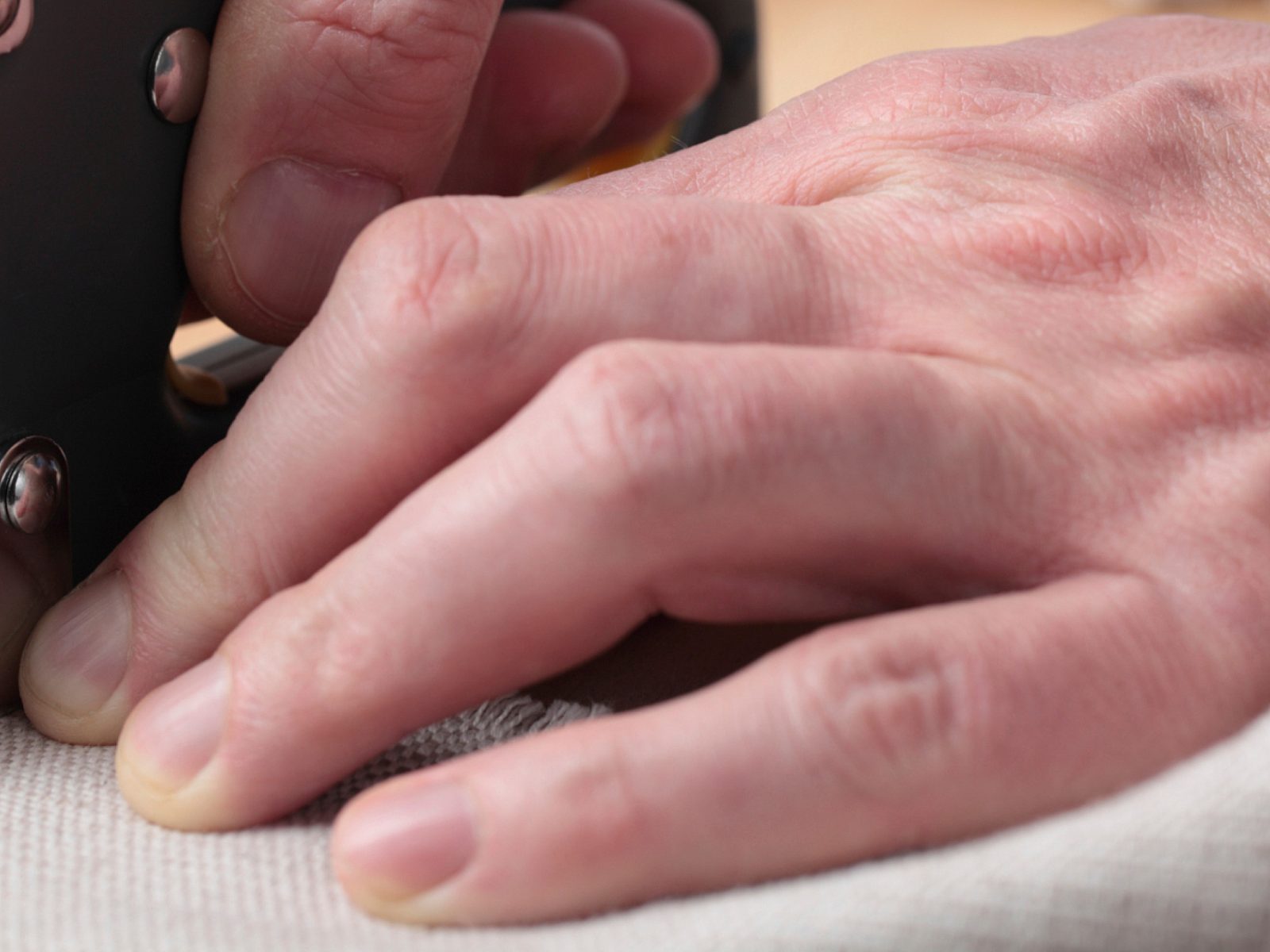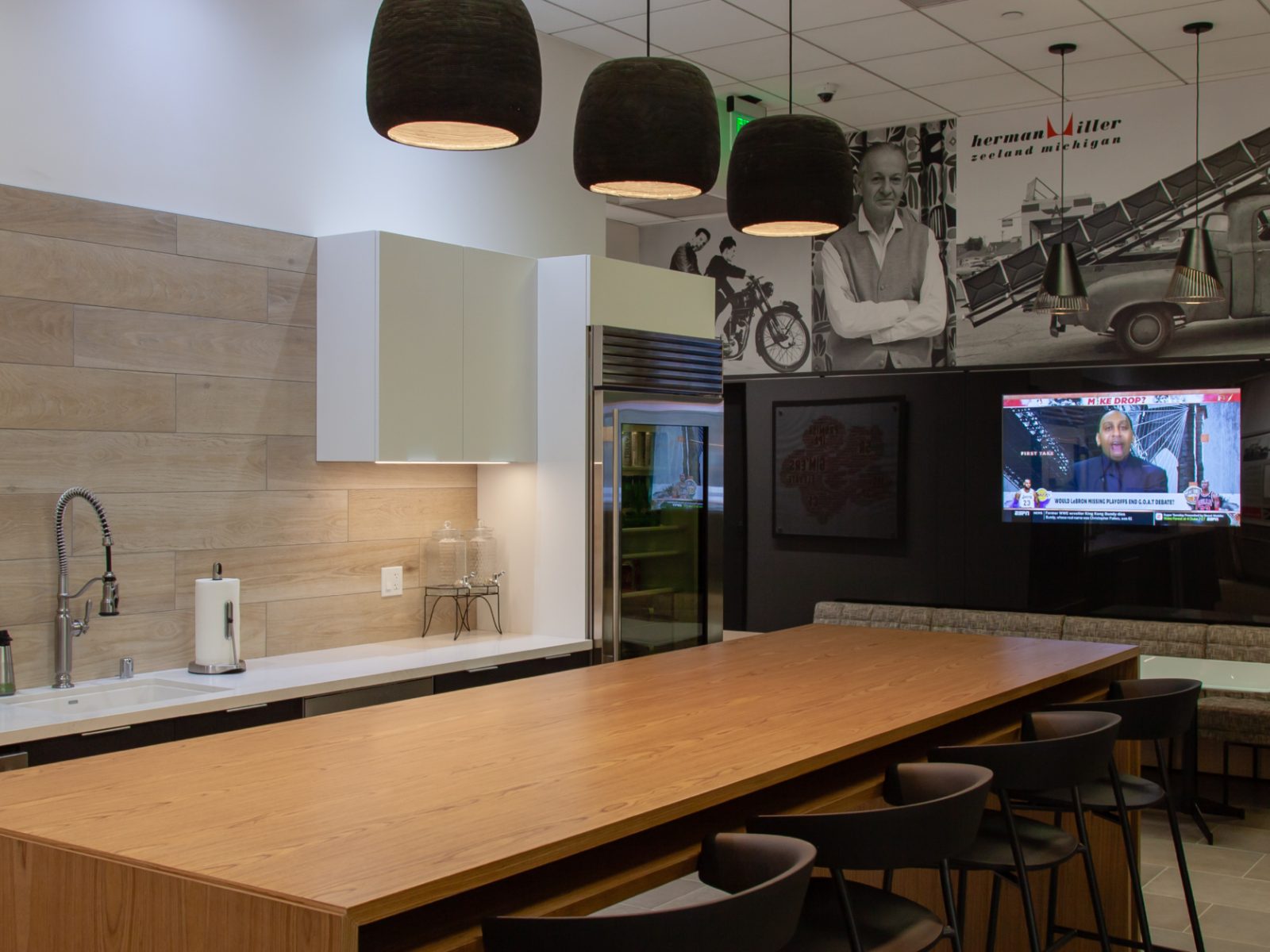10 Workplace Shifts to Watch in 2020

Pizza vending machines, kombucha on tap and bowling alleys are just a few of the novelty touches you will find in modern workspaces today. But, these Instagrammable spaces mute what’s actually important: the fact that these spaces are almost always in use.
Gone are the days of uninspiring workplaces filled with siloed offices, white walls, florescent lighting and large, clunky cubicles. Priorities are shifting and today’s workforce is seeking an experience.
Employers who once ruled the market with attractive compensation packages and fancy job titles, are now in the passenger seat. Prospective employees today are looking beyond what an organization does, and are considering factors such as development, transparency and work-life balance.
This shift from a customer-centric to an employee-centric work experience has completely redefined business strategies from the bottom-up, and savvy employers are adapting their workplaces in order to remain competitive and attract top talent.
As we look ahead at a new decade, it’s a good time to stop and assess how our workspaces and office furniture are supporting our organizational structure. Technology continues to advance and at the same time, generational demographics are shifting to make way for a new workforce that is more diverse than ever before.
Millennials currently make up the majority of the workforce and are maturing into leadership positions, Gen Zers are graduating and entering the workforce, Gen Xers are maturing into senior leadership roles, and Baby Boomers are working as consultants and contractors. With so many varied demographics, we expect to see workplace design shift in a big way in 2020 and beyond.
1) Activity-based design to allow for varity and choice.

Open-plan office environments and the immediacy of digital communications are changing the way people utilize space. As the number of remote employees and off-site freelancers continue to rise, people increasingly want to be able to work whenever and wherever they choose.
Workspaces are moving away from traditional office design, towards a more modern unassigned activity-based floorplan which offers employees the freedom and flexibility to choose where they want to work. From quiet spaces for individual work, to collaborative huddle areas, to spaces designated specifically for fun or for socializing, the goal is for an organization’s office furniture to serve every type of worker and every possible activity with a different space.
By offering choice, people can curate their environment to the specific task they are trying to accomplish. In fact, according to this Harvard Business Review, offering employees control over when, where and how they work can lead to higher levels of satisfaction, innovation and overall job performance.
2) We will see more collaborative areas.

With a plethora of apps that help to streamline communication such as email, text messages, instant messaging and social media, we are more connected than ever. And while getting information quickly often times leads to greater efficiencies, there is a breakdown in human connection and collaboration due to our reliance on technology. Insightful conversations are being downsized to quick to-the-point email exchanges and networking today consists of adding your connections to your LinkedIn profile.
Today’s millennial workforce craves communication, collaboration and real-time connectivity in order to feel engaged and motivated. According to this 2019 report, companies with highly engaged employees report lower turnover rates and higher productivity and performance. Integrating these core values into your workplace design and office furniture can increase employee engagement and drive business value.
3) And more quiet areas too.

In light, sociable, open-plan offices, people are seeking out cozy, quiet corners to focus for longer periods of time. While the open office allows employees to collaborate easier, it can also be a cause for too much noise and too many distractions during the workday. If employees don’t have an easy way to get that distraction-free time to process their thoughts, productivity and morale may suffer.
If your office space could use more privacy, there are several ways to increase that privacy without moving your headquarters or hiring a contractor. One easy way to do this is to invest in a new piece of office furniture, like this Framery O phone booth, a “quiet pod” designed to create a bit of privacy in the midst of an open space. Another option is to build in several private sound-proof rooms for employees to share and provide occasional privacy without dedicating private office space for every employee. In 2020, we expect to see more companies integrating more quiet areas and office furniture into their workplace design.
4) Wellbeing in the workplace will be a greater focal point.

Improving employee wellbeing has been a hot topic for some time now, but the conversation is usually limited to physical wellness—that’s why so many new office spaces include amenities like free snacks, fitness centers and play areas. However, stress and other mental health problems are one of the biggest causes of sickness-related absences from work, and employers are increasingly recognizing the interconnectedness of all aspects of health, from physical and social to financial and emotional.
According to the American Psychological Association (APA), a psychologically healthy workplace should include five components: work-life balance, health and safety, employee growth and development, employee recognition, and employee involvement. Leading organizations are realizing this and are widening the tent for workplace planning and design teams to include HR and wellness program stakeholders to create a healthier workplace.
A few simple ways to integrate wellness into an organization’s workplace design include incorporating elements such as natural light, fresh air, and plants. In fact, this 2019 Workplace Wellness Study indicates that natural light and ventilation have been shown to improve employee health and wellbeing, as well as performance. If employees can’t work next to a window, circadian lighting that mimics sunlight can offer similar benefits.
5) More informal meeting/mixed media spaces.

Popularized by employers like Google and Apple, game rooms have become a way for companies to boost employee engagement and attract potential talent. This kind of perk allows employees to escape the daily grind and decompress, get their creative juices flowing, or socialize with their peers.
These mixed media spaces can also bring about bonding between employees and improve overall morale and culture of the company. This type of office furniture offers a fresh way to promote work-life balance and show your staff and customers that you make wellness and mental health a priority. In 2020, we expect to see more companies incorporating multipurpose spaces such as music lounges, artists makers space or game areas into their workplace floorplate.
6) The rise of standing (pun intended).

Many companies today are embracing height adjustable office furniture into their workplaces, and are reaping the numerous benefits of standing at work throughout the day. However, savvy employers are also beginning to stand for things like breaks, meetings and lunch, and some are even embracing walking meetings. In fact, recent APA research found that participants of walking meetings reported feeling more creative and engaged in their jobs.
Frequent low-intensity physical activity, such as intermittent standing during the workday, has far-reaching benefits associated with employee health, wellness, productivity and satisfaction. This, in turn, can have a positive organizational impact on corporate culture, absenteeism, presenteeism, retention and healthcare costs.
7) Video conferencing and technology integration is a must.

With the increasing number of remote employees and off-site freelancers, companies everywhere are seeking face-to-face video due to the technology’s competitive edge. No longer is workplace technology a “nice-to-have” but rather a vital necessity of the workplace. Today, we communicate from our desks, meeting rooms, office branches, homes, and even in transit, and this digital empowerment removes the barriers between ideas and actions.
Video conferencing offers a far greater variety of communication tools, including screen, media, and file sharing, live streaming, digital whiteboarding and integrated chat. By optimizing the workplace with the latest technology, employees are not only more focused and engaged during meetings, they also benefit from nonverbal cues and body language to create better, more authentic relationships with their remote coworkers and customers.
8) Sustainability at the forefront of workplace design.

As sustainability, consumption and climate change issues take center stage at a global level, there has been a tangible increase in demand for office furniture and workplace materials which have strong sustainable credentials. And for the next generations who are looking to do their part in saving the environment, it could be the single aspect of their working lives that matters most.
For companies, greening the office doesn’t only have measurable advantages in employee productivity and cost efficiencies in energy use—a sustainably designed workplace is a means to attract and retain the best talent as it sends a message that companies care about their employees as people, not just workers. Sustainable offices have been shown to improve productivity, reduce operation costs through energy cost savings, eliminate waste, and provide the flexibility to adapt to change.
9) A flexible workplace is the way of the future.

From flexible seating to modular interior walls to adjustable workstations to portable conference tables, companies today are seeking to create a workplace that can be easily reconfigured and rearranged to meet the everchanging dynamics of the workplace. No longer are organizations looking for a short-term “quick fix”, leading employers today are looking to invest in durable, adaptable office furniture and interiors that will last them long-term and support a multitude of users.
Flexible and modular office furniture make it easy to optimize productivity for a variety of different types of workers by integrating new technology. This, in turn, increases the longevity of workspace investments. When organizations are faster and more agile in configuring a new workspace, they become more responsive to changes in the business environment, and we expect to see more companies integrating flexible office furniture into their workplace floorplate in 2020 and beyond.
10) Incorporating brand identity and values into workplace design.

From innovative tech startups to large corporations, the role of color is making a splash in workplace design and office furniture. As employers seek to express their unique ethos, the workplace is becoming an increasingly important way of communicating organizational culture—which can be key in attracting talent and fostering a meaningful environment for current employees.
Progressive organizations are even incorporating employees in the design process of these new brand-specific workplaces. By integrating participatory art in their spaces, they foster creative expression among employees, evoke the spirit of the brand and encourage workers to become more invested in their workspace by involving them in the design process.
The workplace as a thoughtful reflection of company branding can also enhance worker ties to the office and foster a cohesive sense of place identity for employees. Visitors and employees alike see the workplace as an extension of company culture, and there is a unique opportunity to build brand identity and reinforce core values through color and unique office furniture. Find some spaces where you can design delight by creating spaces that employees actually look forward to spending time in throughout thoughtful application of color, branding and culture.

